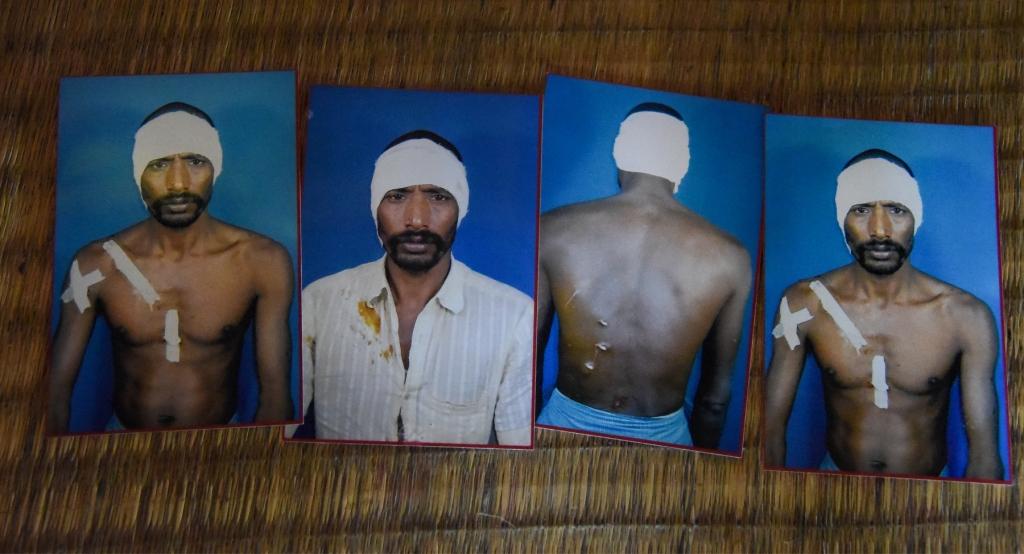In Pictures: Shrinking Habitat Leads to Tiger-Man Face Off in Sundarbans

Hungry and thirsty tigers in Sunderban, unable to hunt because of the heat and the shrinking habitat, have turned to the easiest prey: Man. In this tussle over land, tigers are now attacking human beings who are entering their forests for food. Global Warming has led to an increase in tiger man conflict in the Sunderban. Due to a 45 cm rise in the water, the salinity levels in Sunderban have spiked. This has forced the tigers to move towards the northern (more densely populated parts) of the Sundarban forests resulting in an increase in tiger-man conflict. The proof of this is in the increasing number of ‘tiger widows’ in this area.
As agriculture and fishing become increasingly unviable in the islands due to natural calamities and salt water ingression, a sizeable number of Sunderbans’ farmers have become migrant labourers. For those who could not migrate, the only options are fishing, hunting crabs and collecting honey from the dense mangrove forested areas which the increasingly insecure tigers, also victims of hunger because of scarcity of prey, are fighting to protect in the only way they know.
Below are photographs taken by Tanmoy Bhaduri of survivors of tiger attacks in Sunderbans, a struggle where the Tiger is eventually the loser with the tiger population of India falling with the years.
(Jayanta Pradhan (45), faced a tiger attack on March 10, 2015 when he went to the river for hunting crabs with other five members of his village, Kishorimohonpur at Maipith).
(Sambhu Bhandari (62), was attacked by the Royal Bengal Tiger at his village Kishorimohonpur ten years ago.)
(Lata Jana mwife of Satyabrata Jana, a 52 year fisherman who was dragged away by a tiger in the Sundarban in 2011)
(Nepal Adak (60), narrowly escaped a tiger attack by luck. “I was dragged by a Royal Bengal Tiger when I entered the forest for wood. The tiger attacked from behind, I tried hard but couldn’t escape... It almost swallowed me up in its mouth. I started praying, “Vagoban Ami Seshe Bagher Kamore Morbo ! Banchao.” Suddenly, the tiger stepped down and left me. I have no vision at that moment, there was bleeding from my head and ears. My friends carried me home after a 13 hour journey and then took me to hospital. Now I can’t hear in my left ear and can’t carry anything on my head,” said Nepal Adak.)
(Radheshyam Mondal (55) faced a tiger in 2010 whilst fishing at a creek in Sundarban).
(Sister-in-law of Sukdev Bera, Sandhya Bera, shows the identity card of Sukdev -- who was dragged by a Royal Bengal Tiger in 2009 at Nagenabad, Baikunthopur. His wife Pratima Bera migrated to Kolkata with two children).
(Bappa Bhuiya, a 22-year-old crab hunter was dragged away by a tiger at Benifeli jungle in the Sundarban on August 24, 2011. Bappa Bhuiya was hunting crabs along with three others at a creek when a tiger pounced on him and dragged him away. Bappa left behind an 18 year old wife Rakhi Bhuiya. Rakhi was forced to marriage again by her parents 12 days after Bappa disappeared).
(Sandhya Bhuiya, mother of Bappa Bhuiya, bursts into tears while showing Bappa’s photo).
(Chandana Singh, wife of Praveen Singh, with their two children Subrata (10) and Sanjoy (6). Praveen was dragged by a tiger in November, 2015. “Praveen was fishing along with five others at a creek when a tiger pounced on him and dragged him away,” said Subal Singh, his father).
(Khudiram Naskar (65), who narrowly escaped a the tiger attack, shows his injury marks).
(Aminul Molla (55), residing at Nagenabad Mollah Para at Baikunthopur, shows injury marks on his chest and face. He cannot speak properly because of this injury near his lips).



